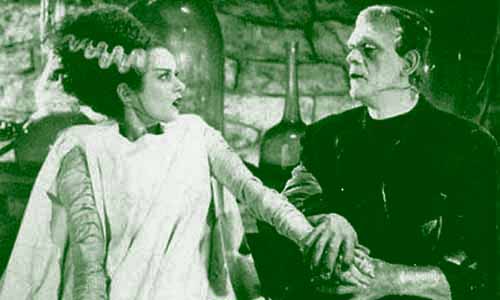RICHARD PHILLIPS-JONES looks at H Certificate, the forgotten film certificate for horror movies
Since 1913, the BBFC has been responsible for classifying films for exhibition in the UK. The names and age restrictions of the certificates awarded have changed over the years, but the basic goal has remained the same: to stop any unsuitable material being seen by anyone deemed corruptible or under-age.
The first certificates were simple enough. The “U” certificate stood for Universal, suitable for all and the only constant classification still going strong today. The “A” certificate indicated that a film was only considered suitable for adults (16 or over), although it was down to local councils as to whether children needed to be accompanied by an older viewer.
I assume the local authorities in the north-west of England were enforcing this rule in 1931, as my grandfather liked to tell me of the time when he (aged 8) and some friends wanted to see Frankenstein at the Majestic Cinema, Ashton-Under-Lyne. None of their parents were likely to approve of them seeing this horror masterpiece, so they simply hung around outside, asking entering patrons if they could accompany them long enough to buy a ticket. Once all inside, they simply regrouped and enjoyed the show. Genius!
Naturally the BBFC soon caught on to this particular ruse, and the “H” (for horrific) certificate was introduced in 1937. Theoretically, this prohibited anyone under 16 (accompanied or not) from seeing a film, although it was still down to local councils whether they chose to enforce this or not.

The BBFC’s own website lists only 21 films which were awarded an “H” during its 20-year existence. However, this list shouldn’t be considered comprehensive. For instance, a quite bizarre British version of The Fall Of The House Of Usher, rated “H” in 1950, is conspicuous by its absence. Still, such omissions are likely to be the result of much BBFC documentation from the period having disappeared over the years. Those films that are listed make for interesting reading, throwing up some interesting idiosyncrasies as far as Brit-related horror is concerned.
Take Bride Of Frankenstein, for example. Passed “A” in 1935, a 1943 re-issue was re-classified “H”. Without access to the original BBFC notes, one can only guess at the reason for this. Son Of Frankenstein (1939) had been classified “H” from day one, so it may have been an attempt at some consistency. Alternatively, during wartime such morbid subject matter might have been viewed with more disdain?
This would possibly explain a number of “H” ratings for horror films of the period, which included Dark Eyes Of London (1939), The Invisible Man’s Revenge (1944, even after cuts!) and The Vampire’s Ghost (1945). What it doesn’t explain is why many, possibly equally ghoulish films were passed with an “A” (The Wolf Man (1941) and The Seventh Victim (1943) spring to mind).
The “H” awarded to 1943’s The Return Of The Vampire is probably down to (spoiler alert!) the titular Count’s death by sunlight, an effect achieved by moulding a wax head over a skull, then filming it as it melted away – pretty strong stuff then, and still quite effective now.
Curiously, both The Mummy’s Ghost and The Mummy’s Curse (both made in 1944) were delayed for 2-to-3 years before eventually receiving an “H” in the UK, despite arguably being no more grisly than their predecessors.
Meanwhile, two bottom-of-the-barrel Bela Lugosi flicks for the poverty row Monogram studio cause some puzzlement. They must have been awarded an “H” for their concepts rather than any actual on-screen shenanigans, since both The Corpse Vanishes (cut for “H”, 1942) and The Voodoo Man (1945) were pretty undistinguished fare.
Perhaps the most amusing aspect of all this is the fact that, of the “H” rated films I have covered here, the majority are currently classified “PG”!
As the decades have rolled by, the “H” certificate has become something of a minor footnote in film history, but in retrospect deserves commemorating as a somewhat quaint, very British reaction to the sound era’s first wave of horror.
The better remembered “X” certificate was introduced in 1952. This time, councils had no veto over this compulsory classification, and its arrival nicely heralded the rise of Hammer Films, as they added a splash of colour to their fresh horror cycle. That’s where I’ll be picking up the story next time.
Meanwhile, for more background on this strange period in censorship, I unreservedly recommend Jim Ivers’ piece, The Horror Film Hiatus Of 1936-1938.








“The “H” awarded to 1943’s The Return Of The Vampire is probably down to (spoiler alert!) the titular Count’s death by sunlight.”
Not even that! Denis Gifford notes that the scene was cut, and when the film was reissued with an X (the version I saw in the early 1960s), the footage was still missing.
The 1950 British version of House of Usher is only really horrific in its appallingly wooden acting by some of the male leads
The last para of the article is incorrect. Councils did have a veto over the X rating; in fact all cinema ratings and that still exists today.
Do you know where I could find a full list of the films that got this rating?